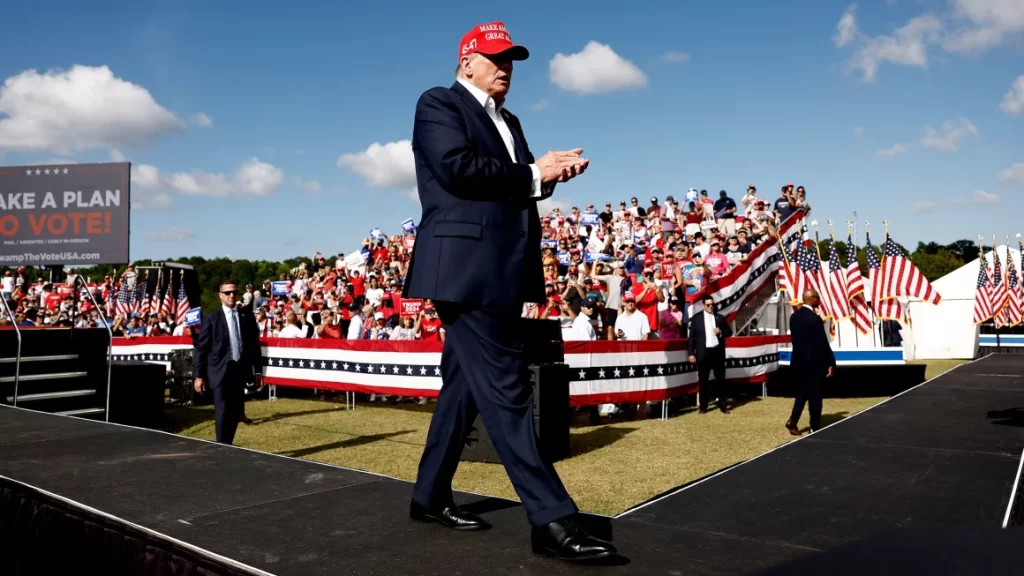
That’s great news for American tourists planning trips abroad this year (and they are, in record numbers), but not as good for the large, multi-national companies that make up the majority of the S&P 500.
What’s happening: The most recent bump in the dollar is politically charged, but, at its core, it all comes down to the Fed.
After showing a dead heat for most of the year, recent presidential polling has shifted in favor of former President Donald Trump over President Joe Biden. Should Trump’s advantage now turn into a win in November, that would likely mean the preservation or expansion of tax cuts and increased tariffs. During last month’s presidential debates, Trump reiterated his desire to impose a 10% tariff on all imports, which would likely increase inflation and cast doubt on interest rate cuts.
“After reflecting a statistical dead heat for most of the past few months, US presidential polling has broken decisively in favor of a Republican win, and markets that ignored political rhetoric are beginning to discount outcomes, with bond volatility spiking,” wrote Lisa Shalett, head of the global investment office at Morgan Stanley Wealth Management, in a note on Monday.
“While stocks have continued to grind higher, equity investors will ultimately need to deal with the potential consequences of proposed policies featuring three critical variables—tax cuts, tariffs and closed borders,” she said.
Morgan Stanley research estimates that an expansion of the 2017 tax cuts would boost deficits sharply, sending the US dollar even higher.
There are other reasons the dollar has been propelled higher as some European and Asian currencies have seen lackluster growth. The US economy has been relatively resilient through high inflation and interest rates while the eurozone slipped into recession and China and Japan suffered their own economic setbacks.
Why it matters: “The US dollar has been amazingly strong since the US is expected to lead a worldwide economic recovery,” said Louis Navellier, chairman and founder of Navellier & Associates. But that comes with potential repercussions. “A strong US dollar can hinder multi-international companies like the big stocks that dominate the S&P 500, however, smaller, more domestic companies are poised to prosper.”
While expectations for second-quarter earnings, which begin in earnest on Friday, remain high, there may be some pessimism on calls about what a strong dollar could mean going forward, he said.
A strong dollar makes US exports more expensive and reduces the profits of American companies operating overseas when earnings are converted back to dollars. It also increases competition from cheaper imports. And while a strong dollar lowers the cost of imported raw materials, it can boost inflation and hurt foreign investments.